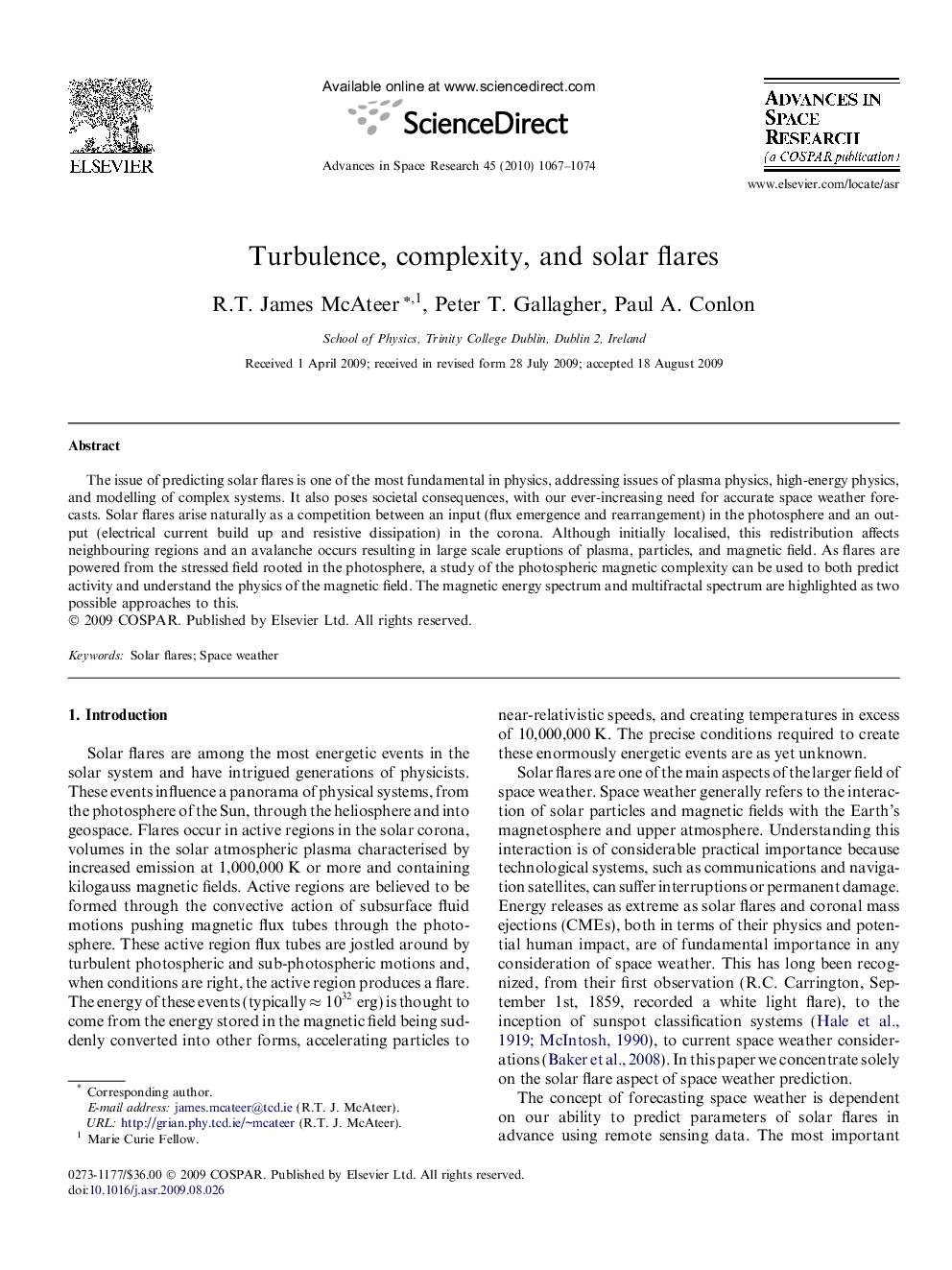| Article ID | Journal | Published Year | Pages | File Type |
|---|---|---|---|---|
| 1765619 | Advances in Space Research | 2010 | 8 Pages |
The issue of predicting solar flares is one of the most fundamental in physics, addressing issues of plasma physics, high-energy physics, and modelling of complex systems. It also poses societal consequences, with our ever-increasing need for accurate space weather forecasts. Solar flares arise naturally as a competition between an input (flux emergence and rearrangement) in the photosphere and an output (electrical current build up and resistive dissipation) in the corona. Although initially localised, this redistribution affects neighbouring regions and an avalanche occurs resulting in large scale eruptions of plasma, particles, and magnetic field. As flares are powered from the stressed field rooted in the photosphere, a study of the photospheric magnetic complexity can be used to both predict activity and understand the physics of the magnetic field. The magnetic energy spectrum and multifractal spectrum are highlighted as two possible approaches to this.
